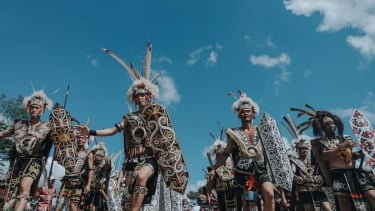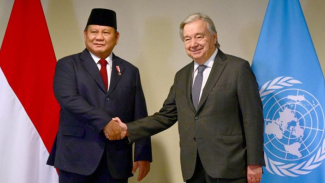Six Native Religions of the Indonesian Archipelago
- ANTARA/Septianda Perdana
VIVA – Indonesia is known to have many tribes spread over several regions. There are six religions recognized by Indonesia such as Islam, Christianity, Catholicism, Hinduism, Buddhism, and Confucianism. However, it turns out that the Indonesian people in ancient times adhered to the original religion of the archipelago.
The variety of religions is quite a lot and each has its own tradition. However, along with the massive population movement, many Indonesians then left it.
Then, the original religion of the archipelago is becoming a minority, not even recognized by the Indonesian state. Religions other than the six religions recognized by the government are considered religious sects such as animism.
Well, here are some of the original religions of the Indonesian archipelago:
1. Kejawen, Java
Budaya kejawen.
- U-Report
Kejawen is a belief that has been embraced by the Javanese people for a long time. They continue to practice their primary religion (the main religion), carry out its orders and prohibitions, but still carry out their behavior as Javanese natives who are very obedient to their ancestors.
Kejawen adherents always say that this belief becomes a religion. Kejawen belief has several missions in its teachings. One of them must carry out the four obligatory things while living.
A Javanese must be able to be a blessing for himself. Then they must also be a blessing to the family. The last two of the Kejawen missions are to make humans a mercy to others and also to the universe.
2. Sunda Wiwitan, Sunda
Budayawan melakukan aksi dukung Sunda Wiwitan Cigugur di depan Gedung Sate Bandung, Jawa Barat, Senin (27/7/2020).
- ANTARA FOTO/Novrian Arbi
Sunda Wiwitan is a religion that has been embraced by some Sundanese people for a long time. Even before Hinduism and Buddhism entered this country, the Sunda Wiwitan teachings already existed and developed in the community.
In the modern era like now, the Sunda Wiwitan people can be found in the Kanekes area, Banten; Kampung Naga, Cirebon; and Cigugur, Kuningan.
Sunda Wiwitan worships ancestral spirits as exalted entities. In addition to worshiping ancestors, Sunda Wiwitan also has one God who’s often called Sang Hyang Kersa. God in the teachings of Sunda Wiwitan is still one.
3. Parmalim, North Sumatra
Ritual Parmalim
- ANTARA/Septianda Perdana
Parmalim is the original religion of the archipelago or traditional beliefs held by the indigenous Batak people of North Sumatra. Currently, the Parmalim religion is led by King Marnangkok Naipospos and still routinely carries out its rituals and religious activities.
Parmalim adherents called "Ugamo Malim" believe and worship God Almighty that in local terms is called "God Debata Mulajadi Nabolon".
4. Kaharingan, Kalimantan
Ilustrasi masyarakat suku Dayak di Kalimantan
- vstory
Kaharingan is one of Indonesia's original religions originating from Kalimantan. Many of the Dayak tribes adhered to religion long before the major religions were recognized by the government.
Kaharingan believes in the existence of an entity that’s often called as Ranying Hatalla. The entity can be equated with the Supreme Lord.
The Kaharingan religion was incorporated into Hinduism in 1980. The similarity of traditions is considered similar by the government.
Although included in the Scope of Hinduism, Kaharingan still has original traditions that cannot be equated with other religions. For example, they have a place of worship called Balai Basarah.
5. Naurus, Maluku
Penampakan suku Togutil di Waijoi, Halmahera Timur, Maluku Utara.
- Repro Vlix.id
Naurus is the original religion of the archipelago that’s the belief and grip of the people of Seram Island, Maluku. People with this Naurus are spread from the Manusela tribe and the Wahai tribe in the mountains of North Manusela, Seram and the Nuaulu tribe in the northwest of Manusela.
At first, Naurus was closer to animism, but over time, this religion began to be influenced by the teachings of Hinduism and Protestantism.
6. Marapu, Sumba Island
Weekuri, Lagoon, Pulau Sumba
- U-Report
Marapu is a religion native to Sumba Island that has existed for hundreds of years. People with this religion worship ancestors who have left the world.
People with the Marau Religion believe that after death comes, they will go to a very beautiful place called Parai Marapu. Many said, the place is very beautiful similar with heaven in Islam and Christianity.





































